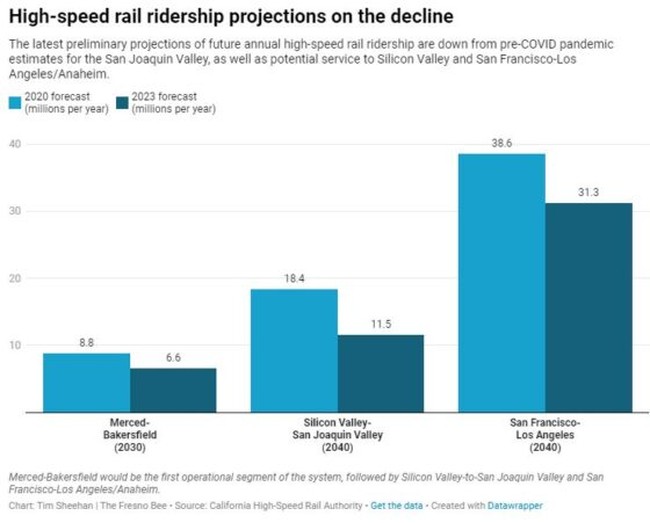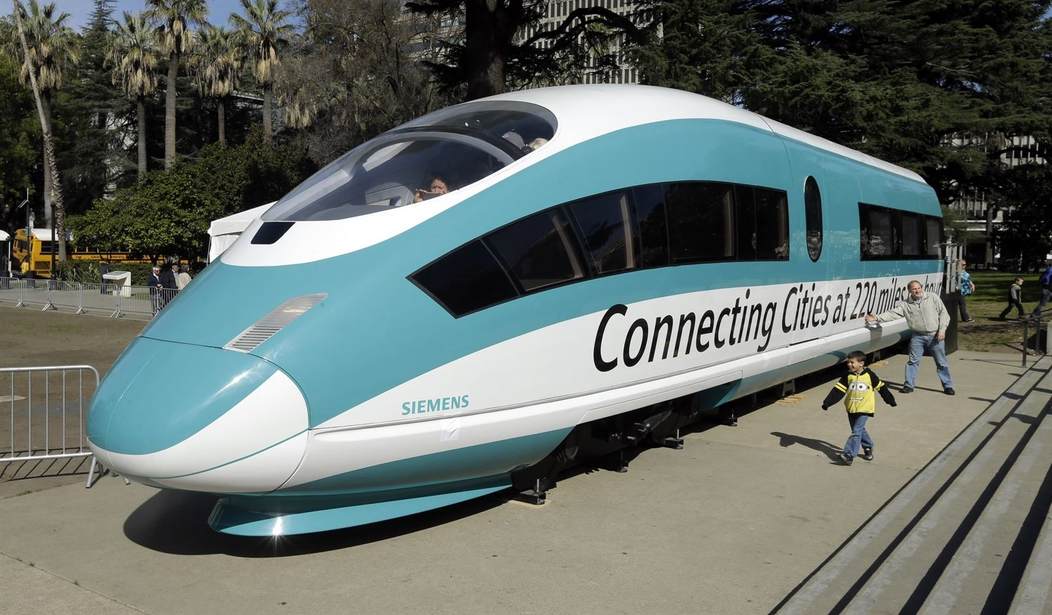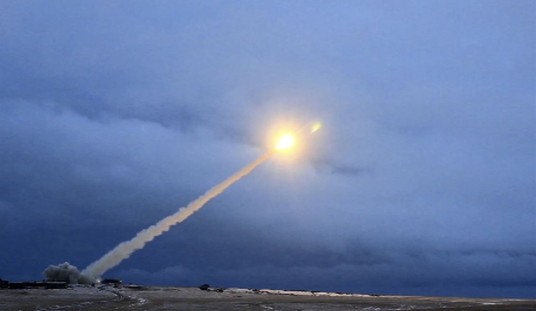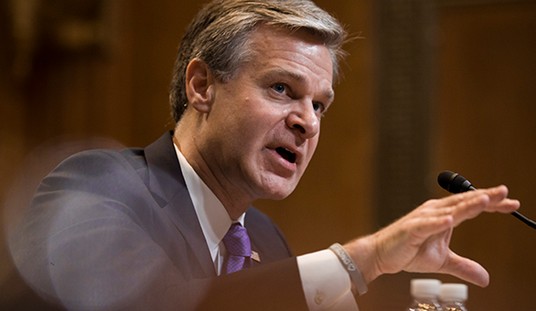Last February the California High-Speed Rail Authority announced that the price for the state’s planned bullet train had gone up from $100 billion to $105 billion. A few months later they clarified it was actually going to be $113 billion. Yesterday there were more reports about delays and price increases.
High Speed Rail Authority officials on Thursday could not provide an estimated completion date for the original vision pitched to voters but said the price tag for the entire project is now up to $128 billion, a 13% increase from last year’s projections…
Construction is currently focused on a segment in the Central Valley, a 170-mile stretch between Bakersfield and Merced. Project officials last year estimated that the route would be ready for riders in 2030. While that is still their goal, the latest update shows service could begin sometime between 2030 and 2033.
In case you’ve forgotten, this entire project was originally pitched to voters 15 years ago at a cost of $33 billion. The fact that the estimated cost has gone up $28 billion in the last 13 months gives you an idea where we are at this point. As mentioned above, the first section is still 7-10 years away from being opened but completion of the line from LA to San Francisco doesn’t even have a projected deadline anymore.
Although there isn’t an exact timeline for the completion of the full project between Los Angeles to San Francisco, project leaders noted the environmental review process for 422 of the 500-mile route has been completed. The two final routes requiring environmental reviews include Palmdale to Burbank and Los Angeles to Anaheim.
Call me crazy but a project without a deadline is a project that people don’t really believe is going to happen. The other issue raised by this new report involves ridership. Obviously, you don’t spend this kind of money on a project unless it’s going to service a lot of people. But the report now projects ridership will be significantly lower than previously projected.
Changing commuter patterns stemming from the COVID-19 pandemic and sluggish expectations for population growth in California are driving down forecasts for ridership on the state’s future high-speed rail project.
In a report due to the state Legislature on Wednesday, the California High-Speed Rail Authority unveiled the latest incarnation of its ridership projections for its Merced-Bakersfield section, anticipated to be the first interim operating segment for electric bullet trains. The new numbers represent a significant drop in the anticipated number of passengers for the first year of service when — or if — operations become reality sometime between 2030 and 2033…
…the expectation for overall train ridership in the Valley dipped from almost 8.8 million passengers per year forecast in a 2019-2020 financial plan to about 6.6 million in the 2023 project update.
That’s a nearly 25% drop from the previous projection. The Fresno Bee made this chart showing how the new projections compare to the old ones.

Obviously any projections this far out are really just guesses. That’s especially true for the projections out to 2040. Still, the expectation that ridership will be substantially lower means the cost per rider is even higher.
My favorite explanation for why California is stuck with this ongoing disaster is still the one highlighted by the NY Times last year. The state ignored experts from countries where bullet trains actually exist and decided to chart their own course. As a result, the experts quit to go somewhere “less politically dysfunctional” to build out a high-speed rail system: North Africa.
The state was warned repeatedly that its plans were too complex. SNCF, the French national railroad, was among bullet train operators from Europe and Japan that came to California in the early 2000s with hopes of getting a contract to help develop the system.
The company’s recommendations for a direct route out of Los Angeles and a focus on moving people between Los Angeles and San Francisco were cast aside, said Dan McNamara, a career project manager for SNCF.
The company pulled out in 2011.
“There were so many things that went wrong,” Mr. McNamara said. “SNCF was very angry. They told the state they were leaving for North Africa, which was less politically dysfunctional. They went to Morocco and helped them build a rail system.”
Morocco’s bullet train started service in 2018.
As I’ve said before, I’ve really enjoyed high-speed trains in Europe and Japan. I’d love to see it here, honestly. But this project was doomed from the start. But this isn’t the only high-speed rail project on the agenda. A new $10 billion project that would connect LA to Las Vegas is just gearing up.
Developers have struck a labor deal for the construction of a bullet train planned for rapid transit between Southern California and Las Vegas…
The system will depart from San Bernardino, California, and have stops in Victor Valley, Hesperia, Apple Valley, Rancho Cucamonga and the Las Vegas Strip…
The $10 billion project is expected to create 35,000 jobs and hopes to complete the train system by 2027.
A 200 mph trip to Vegas sounds like a good idea for several reasons. One, there isn’t much to see between here and there and two it’s a fairly long drive that often becomes a traffic jam on Sunday afternoons as all of the people return to LA at once. There’s certainly a lot more ridership potential than there is between Merced and Bakersfield. If they can get it done by 2027, I will ride it.
Update: Another reminder why this was a mess from the start thanks to politics.








Join the conversation as a VIP Member